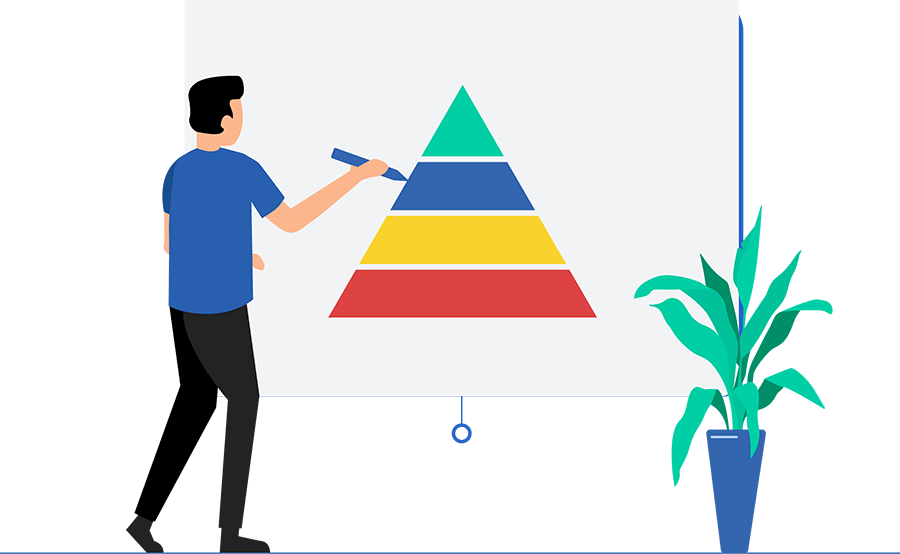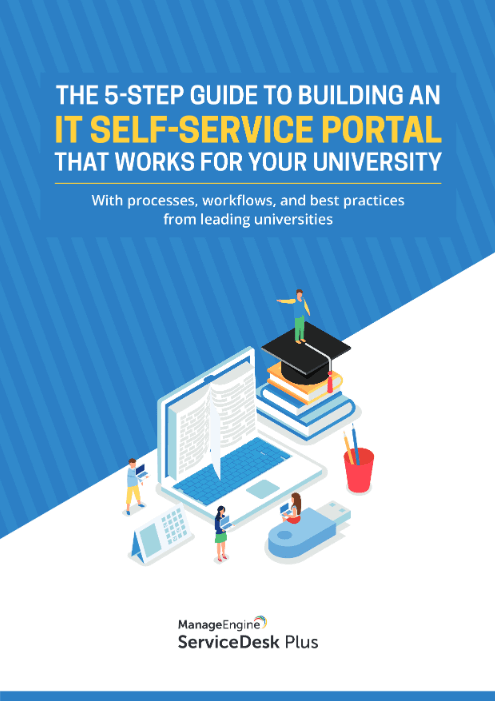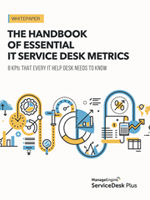DIKW model for knowledge management

The data, information, knowledge, and wisdom (DIKW) model explains how IT service desk teams can generate knowledge based on their everyday activities. This also shows how the transformation of data into information, knowledge, and wisdom occurs along with the relationship between them. This model is also known as the DIKW pyramid or DIKW hierarchy.
Data
Data is the collection of discreet facts about events in the form of numbers, characters, and specific or relative values that the organization can gather. The key activities to be performed at this stage are:
- Identifying a reliable source to get data
- Archiving and deleting the appropriate data
Information
This stage is about adding context to data. The key activities to be performed in this stage are:
- Converting data into information while maintaining data integrity
- Managing information the right way by making it easy for end users to search and use.
Knowledge
Knowledge is derived from experience. It may involve expertise, values, and judgments of members of the IT service desk team such as the knowledge managers, subject matter experts, technicians, or end users. Knowledge created in this stage facilitates smart decision-making.
Wisdom
Wisdom is the culmination of data, information, and knowledge. It adds value to knowledge management. This value is created though dynamic planning, problem solving, strategic planning, and discernment.
Example scenario
Zylker, an electronics company with over 1,500 employees, is on a recruitment drive. Over the weekend, many new talented individuals were recruited for different teams. But at the start of the week, when the IT team onboarded the first employee and assigned them to a team, the file management (FM) application failed and none of the teams were able to access any files in the organization.
While the other teams were virtually having an extended weekend, the IT team had to quickly look into the cause of the failure.
For the above situation, let's breakdown the incident and organize it into a DIKW hierarchy for knowledge management.
Data:
The IT teams received an incident ticket from the application monitoring tool 'TOMCAT_THREADS_EXHAUSTION'
Information:
The application monitoring tool sheds more light on the ticket with "File server ; Connector port:8332 [Tomcat Busy Threads Percentage:100% , Threshold :90%]
Giving information about the alert helps IT teams make sense of data. In this case, the FM server memory usage has been maxed out.
Knowledge:
Here is where the analytic skill set of the IT team is needed. After checking the logs of the FM server, the team found multiple parallel requests from the browser client requesting data of all the members of the team where the new employee was just assigned.
The team then checked the knowledge articles that describe the background processes that occur when a new employee is assigned to a team. They learn that a complete background refresh occurs for the data of all members of a team when a new employee is assigned to it. The background refresh tries to update data of the team members in browser client cache. These requests flooded the FM servers and led to a downtime.
Wisdom:
Wisdom comes from experience and learning what to do when faced with situations like the one described above.
As an immediate fix, the service desk team removed the unnecessary requests from the browser clients and got the service back up and running. As a permanent fix, the team removed the background refresh logic by fetching only the newly added user data and not the entire team member list.
Discover ServiceDesk Plus, a powerful, collaborative IT service desk



